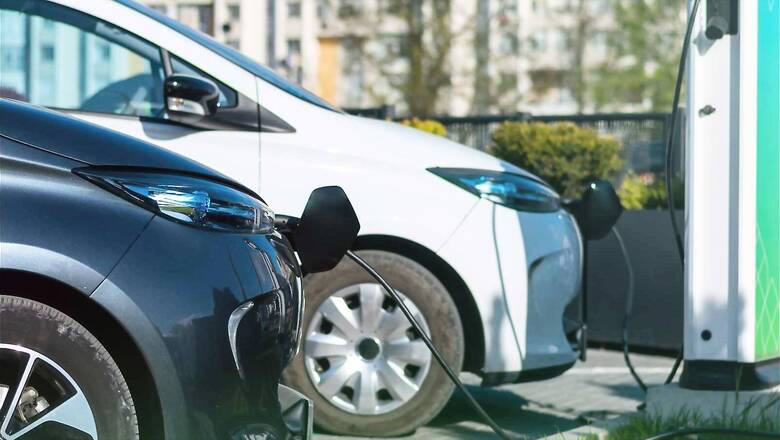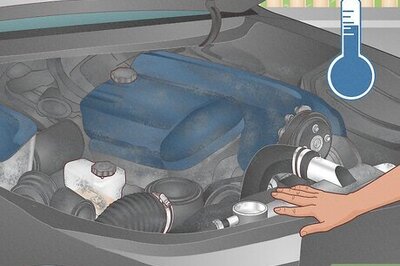
views
India is on the brink of a mobility revolution as the government sets its sights on transitioning the country towards electric vehicles (EVs), in a bid to meet its global commitment to reduce emissions and tackle the adverse effects of oil imports and air pollution. As part of the Paris agreement in 2015, India committed to reduce the emission intensity of its gross domestic product (GHG emissions per unit GDP) by 33% – 35% over 2005 levels by 2030. EV adoption is a huge part of this story.
The Indian EV market is poised for explosive growth, with projections of a 49% compounded annual growth rate (CAGR) between 2021 and 2030, and annual sales expected to surpass 17 million units by 2030. While ambitious, these targets are not as daunting as they appear: declining battery costs and favorable economics make EVs an increasingly attractive option for consumers. EVs are also very easy to maintain – 50% cheaper, as they don’t have all the messy innards of a diesel or petrol vehicle. In fact, the five year Total Cost of Ownership (TCO), is comparable to any other vehicle, if not better.
Moreover, range anxiety, once a major concern, is fast becoming a thing of the past as the number of charging stations in India has skyrocketed. The government has set a blistering pace: total charging stations have increased by 285% year-over-year in FY22, and are set to reach a whopping 4 lakh charging stations by FY26. As adoption grows, it is expected to set in motion a virtuous cycle that creates more EV infrastructure, which facilitates more EV adoption, which drives more infrastructure!
As of July 31, 2021, there were 380 EV manufacturers in India, and this number is only expected to grow, with increasing adoption of EVs in the landscape. The government has also approved Phase-II of the FAME Scheme, with a budget outlay of Rs.10,000 Crore to be expended for a period of 3 years, starting April 2019. The interesting part here is that 86% of the fund has been allocated for demand incentives to stimulate greater demand by way of supporting 7000 e-Buses, 5 lakh e-3 Wheelers, 55000 e-4 Wheeler Passenger Cars (including Strong Hybrid) and 10 lakh e-2 Wheelers.
Vehicle ownership aside, e-mobility businesses in India can focus on business models that use EVs to provide valuable services to customers. Micro mobility services such as electric scooters and bikes are now becoming a popular mode of transportation for short trips in urban areas. Not only are these more sustainable than petrol vehicles, but also more economical when it comes to fuel and maintenance costs.
Another area where EVs can make a tangible difference is in the ride hailing industry. The deployment of electric cabs is a logical step towards reducing carbon emissions and cutting down on fuel costs. Car-sharing services can also benefit from the use of EVs, as they offer a more environmentally friendly mode of transportation, while also reducing the cost of ownership. Car subscription services, which allow customers to access a fleet of vehicles on a monthly basis, can also take advantage of EVs to offer a sustainable and cost-effective alternative. Lastly, E-roaming services provide a hassle-free mode of transportation for tourists visiting India, allowing them to explore the country in an eco-friendly manner.
While interest in EVs has grown, GOI is making it increasingly easier for consumers to buy EVs with attractive incentives. These take several forms: purchase incentives often involve direct discounts on the cost of EVs, while coupons deliver financial incentives that can be reimbursed later. Interest subventions take the form of discounts on interest rates, which makes loans cheaper. Road tax exemptions take away another expense item altogether, as do registration fee exemptions.
The GOI not only provides income tax benefits, but scrapping incentives too! These incentives, offered to owners of petrol and diesel vehicles, make it easier to junk their old, fossil fuel burning vehicle for a swanky new EV that is better for the environment, and so much better on the pocket. In fact, there’s never been a better time to purchase an EV in India with all the interest free loans and subsidies and special incentives available to customers today.
However, as with adoption of anything new, customer faith is key. In order to drive customer confidence, the NITI Ayog has created a framework of standards through the Bureau of Indian Standards (BIS), the Central Electricity Authority (CEA), and the Automotive Research Association of India (ARAI). BIS standards ensure interoperability and minimize trade barriers for EVs and their components, while CEA standards ensure safety of the power grid. ARAI, on the other hand, develops standards for vehicles and its components.
In addition to this, the Ministry of Power has issued the revised consolidated guidelines & standards for charging infrastructure for EVs. These guidelines cover all aspects of the charging infrastructure: from how owners can charge their EVs at home and office, to how to apply for connections, to the tariffs for supply to public EV charging stations. Moreover, these guidelines also mandate the location density of these stations: at least one EV charging station per grid of 3 Km X 3 Km, and one EV charging station every 25 Km on both sides of highways/roads.
For programs of this nature to succeed, and for the EV revolution to flourish, what’s needed is a solid backbone of quality. In India, this is synonymous with the Quality Council of India (QCI), which has been building the foundations for quality and integrity in India’s finished products since 1997, through accreditations under the National Accreditation Board for Certification Bodies (NABCB).
As the EV industry expands, there will also be a growing demand for a skilled workforce, and QCI has been preparing the next generation through training and certification programs such as the National Accreditation Board for Education and Training (NABET), the Training and Capacity Building division (TCB), and eQuest, an online learning portal.
The Indian economy is surging ahead, but this growth brings the threat of increased emissions. Unfortunately, India is also facing disproportionate climate change impacts, which means that unlike other developed nations, we cannot put aside consideration for the environment to pursue our economic aims. There is a need to balance both.
Independent EV manufacturing and adoption is key to meeting both economic and ecological goals, and the government’s incentivized path, coupled with QCI’s standards for quality, safety, and integrity, make the Indian EV ecosystem a powerful force for positive change. This is truly Gunvatta se Atmanirbharta in action.
This is a partnered post.
Read all the Latest News here


















Comments
0 comment